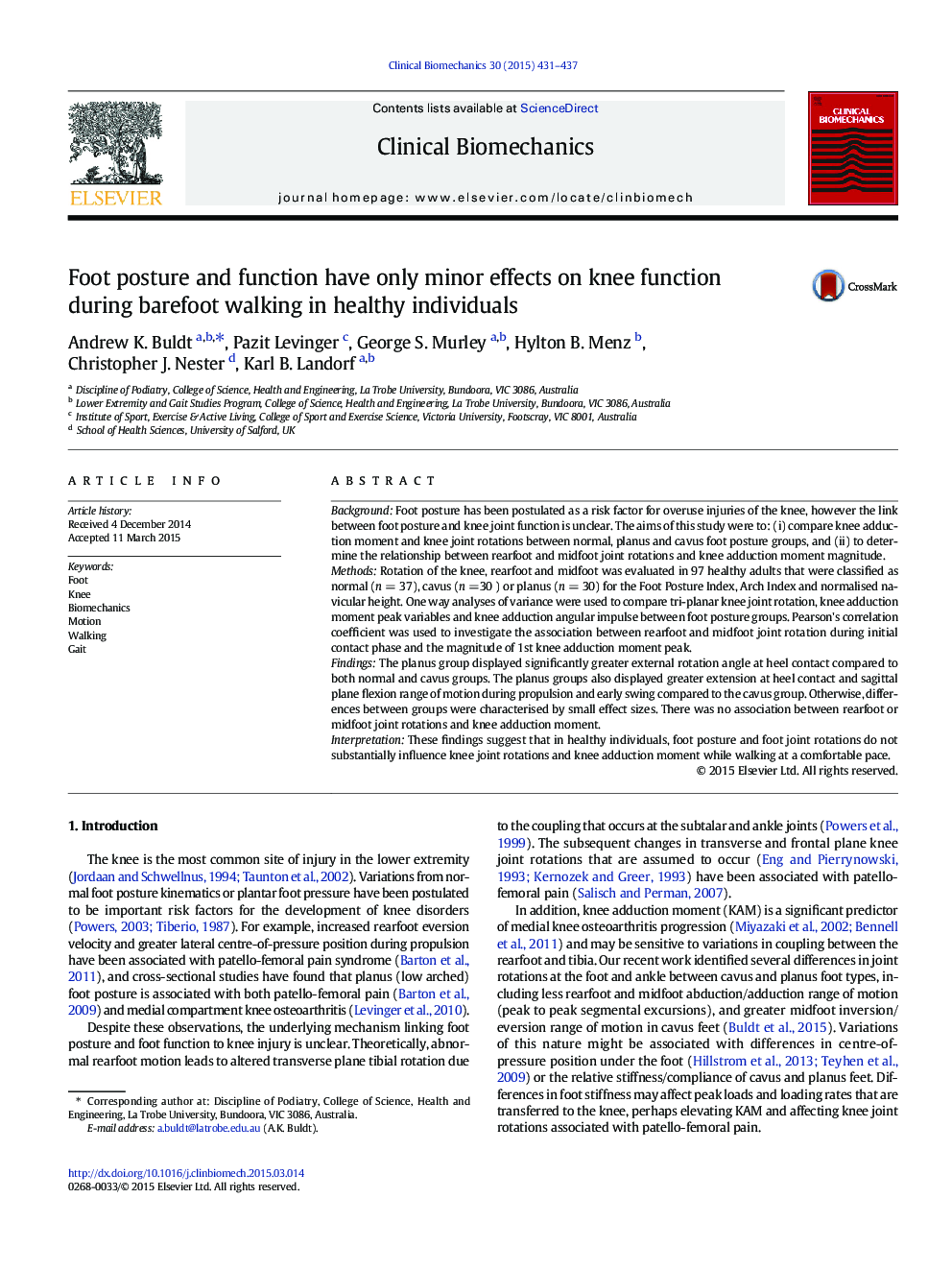| Article ID | Journal | Published Year | Pages | File Type |
|---|---|---|---|---|
| 6204788 | Clinical Biomechanics | 2015 | 7 Pages |
â¢Recruited healthy participants with either normal, planus and cavus foot postureâ¢Compared knee rotations and adduction moment while walking at a comfortable paceâ¢Examined association between rear/midfoot joint rotations and knee adduction momentâ¢Found differences in knee joint angle at heel contactâ¢Foot posture/joint rotations do not substantially influence the knee.
BackgroundFoot posture has been postulated as a risk factor for overuse injuries of the knee, however the link between foot posture and knee joint function is unclear. The aims of this study were to: (i) compare knee adduction moment and knee joint rotations between normal, planus and cavus foot posture groups, and (ii) to determine the relationship between rearfoot and midfoot joint rotations and knee adduction moment magnitude.MethodsRotation of the knee, rearfoot and midfoot was evaluated in 97 healthy adults that were classified as normal (n = 37), cavus (n =30 ) or planus (n = 30) for the Foot Posture Index, Arch Index and normalised navicular height. One way analyses of variance were used to compare tri-planar knee joint rotation, knee adduction moment peak variables and knee adduction angular impulse between foot posture groups. Pearson's correlation coefficient was used to investigate the association between rearfoot and midfoot joint rotation during initial contact phase and the magnitude of 1st knee adduction moment peak.FindingsThe planus group displayed significantly greater external rotation angle at heel contact compared to both normal and cavus groups. The planus groups also displayed greater extension at heel contact and sagittal plane flexion range of motion during propulsion and early swing compared to the cavus group. Otherwise, differences between groups were characterised by small effect sizes. There was no association between rearfoot or midfoot joint rotations and knee adduction moment.InterpretationThese findings suggest that in healthy individuals, foot posture and foot joint rotations do not substantially influence knee joint rotations and knee adduction moment while walking at a comfortable pace.
